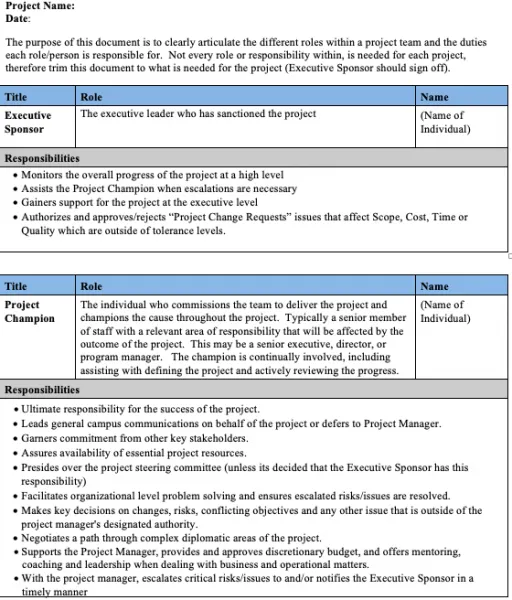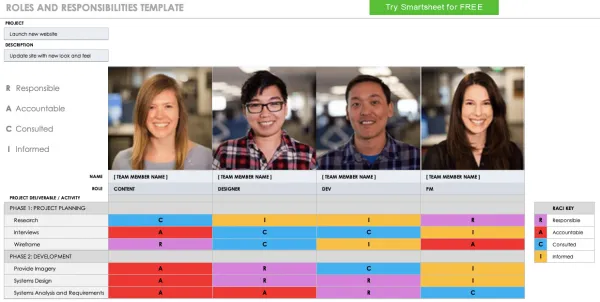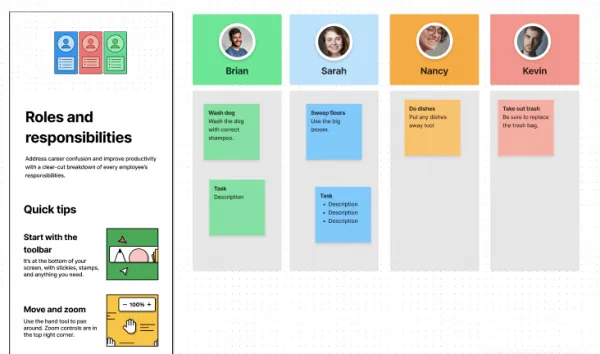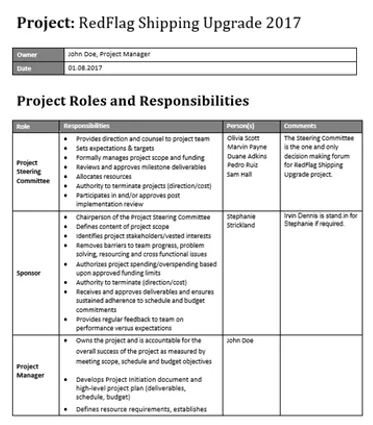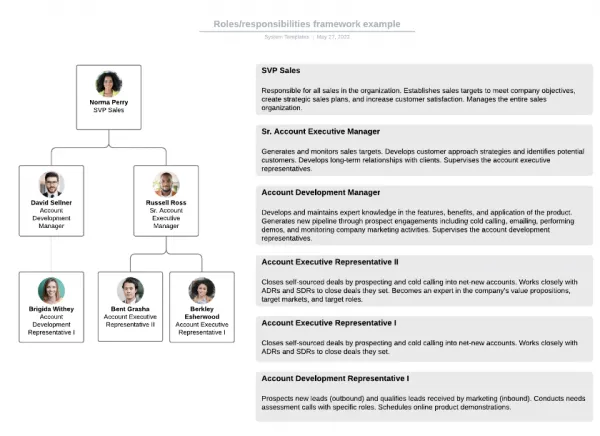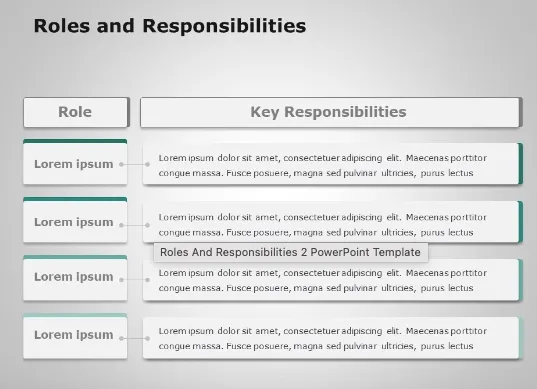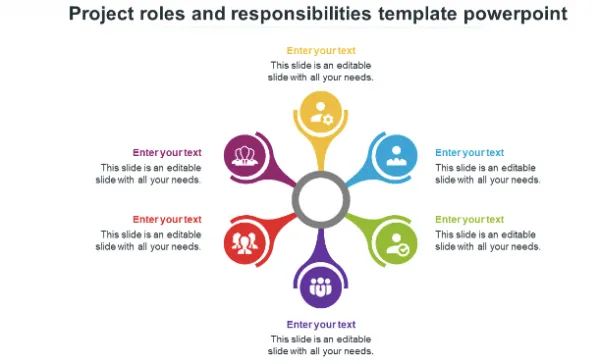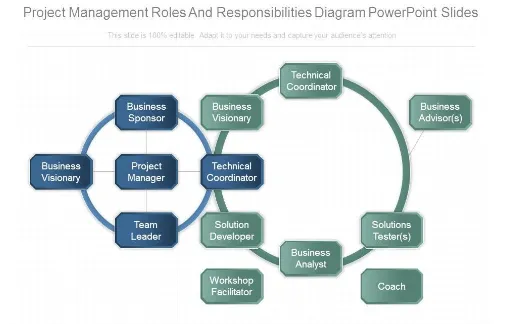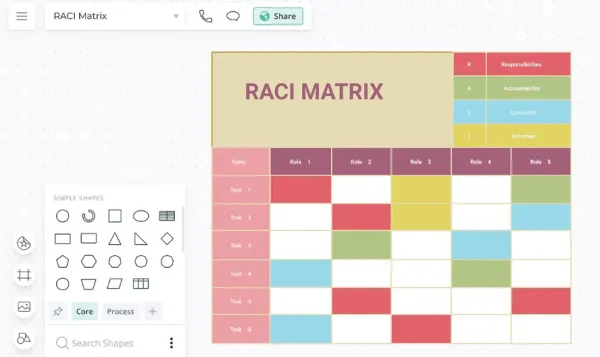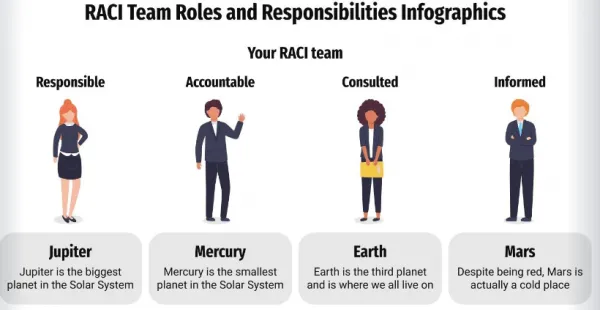10 Free Roles and Responsibilities Templates

Several documents are required to help ensure they are completed during the project creation and management. Roles and responsibilities templates are among them. Whether the document is meant to be part of your job description, an employee training manual, or as part of a project documentation process, having a roles and responsibilities template is essential. This document helps to minimize confusion in the workplace.
A Role can be defined as a person’s position within an organization or a group. It describes their purpose in an entity and tells people who they are and what they do. On the other hand, Responsibility is tied to an individual’s role. They define the duties, functions, and daily tasks each member of an entity must do. Roles hold employees accountable for their responsibilities.
Therefore, a roles and responsibilities template would be a document that clearly outlines the responsibilities of each role in the project. When handling a team project, you must clearly outline each member’s roles and responsibilities.
This template promotes collaboration among team members as they handle a particular project. It can also be used for short projects within an office without a formal structure. The goal of identifying every member’s role and responsibility is to ensure that all team members understand their duties. The Roles and responsibilities template outlines everyone’s duties to the project and helps them know how to work together. The template should be created before you begin scaling the project duration and delegating tasks.
It is convenient during job transfers, task switching, training new hires, and departmental changes. To attract qualified candidates for your project, upload the roles and responsibilities document on your organization’s website or other job application sites.
Objectives of Roles and Responsibilities Template
A roles & responsibilities template is created to ensure members work well together and ensure smooth operations. Assuming a company would like to assemble a team of workers responsible for completing a building project, the following would be the objectives outlined in the document.
To Define the Role and Responsibility of Each Team Member
Delegating duties among the project stakeholders ensures that each member participates fully in the project’s interest. These stakeholders are typically people of interest in the project outcome, e.g., the construction manager, head contractor, architect, project employees, etc. Clearly defining the tasks and duties assigned to each member helps them identify with their leaders and work together harmoniously.
Determine Existing Gaps in Assigned Tasks and Responsibilities
There are so many tasks involved in handling a construction project. The team has to ensure that the supplier delivers the right products and amounts, that the project runs smoothly, that the client is satisfied with the current progress, etc. Some of these tasks can get confused. A roles and responsibilities template ensures each group knows its functions and diligently carries them out.
Define the Project Team’s Interactions With Other Resources and Departments
Before beginning any project, its budget has to be drawn. Allocating resources ahead of time prevents the team members from going over budget. Having a roles & responsibilities template makes it easier for the project stakeholders to interact more freely with other resources within the department. For example, since the template is public information, if a team member approaches another stakeholder to request information about their supplier, they are guaranteed access to that data.
To Improve the Recruiting Technique
A roles and responsibilities template helps a company during employee recruitment. For example, if your team lacks a construction engineer, the template will help you hire the best possible person for the job based on their intended role.
To Improve Communications
It doesn’t matter if your team has ten or one hundred members; the structure is essential. Since the roles & responsibilities template outlines who the leaders are, team members can use the proper communication channels for the job. If there are any disputes to be addressed, for example, a delay in the shipment of cement, etc., the team members will know exactly who to approach to solve it.
To Maximise Efficiency
A roles and responsibilities template minimizes the time spent arguing over project details and figuring out each member’s role. This increases group efficiency and guarantees that the project will be completed according to its schedule while meeting the client’s standards.
What Is Included in the Roles & Responsibilities Template
The roles & responsibilities template does not follow a specific structure. However, its contents are similar across all the available writing styles. Here are some essential aspects of the template.
Job Title
It outlines the roles of every project stakeholder. Some crucial roles include a project manager, project investors, the main contractor, subcontractors, suppliers and vendors, government authorities, team members, etc. These people ensure the project meets its daily goals and delivers quality work.
Job Description
These are the responsibilities of every member of the project stakeholder. For example, the project manager ensures the project is started and completed smoothly and in tandem with the client’s requirements. They oversee every aspect of the team’s roles and responsibilities.
List of Tasks
It lists every duty in the construction project portfolio that needs to be accomplished. For example, I manage site safety, submit documents regarding the building project, enforce the schedule and budget requirements, carry out installations and repairs, etc.
Job Requirements
It lists all the factors that make you qualified for a particular position on the team, such as educational requirements, years of experience, code of conduct, age limits, etc.
The Hierarchy of Roles
It informs team members to whom they are supposed to report and creates a sense of accountability.
Importance of Roles & Responsibilities Template
There are many benefits to having a roles & responsibilities template within an organization. Aside from outlining the duties of every member of the project, it:
Aids in the delegation of responsibilities
Using a template makes assigning tasks easier and ensures a fair distribution of work among members.
Increases team cooperation
Using a template to define the roles and responsibilities minimizes worker conflicts and allows members to work together harmoniously.
Reduces work overlap
It minimizes the repetition of responsibilities within the group. For example, the architect and designer in the group can work together to create a final copy instead of working separately.
Shortens the project’s schedule
When a team collaborates, the project progresses with minimal friction. This ensures its success materializes early.
Proves the project’s existence
Since this template is an official document, it can be used to prove that a particular project was started and completed and the roles and responsibilities of everyone involved.
How to Create a Roles & Responsibilities Template
When handling a project with more tasks, it becomes increasingly essential for every member to be made aware of their purpose in the team. Here is how to develop a roles & responsibilities template.
Identify the roles within the project
This gives you an idea of the job titles to assign. Work your way from managerial and leadership roles to individual team members.
Identify the responsibilities
This gives you an idea of which group handles which task. Before delegation, ensure you note down every available task on the project.
Delegate tasks and duties
Once you have identified all the available positions and the responsibilities they accompany, distribute the work among team members accordingly.
Send out the document
Distribute copies of the template to the team members to get their reactions and opinions. This will increase the chances of member buy-in to the document.
Pros and Advantages of Roles & Responsibilities Templates
Minimizing conflict
When you use a roles and responsibilities template to define each team member’s work, you hold them accountable for their roles.
Track the efforts of team members
Since each stakeholder is responsible for their designated fields, they will work harder to ensure the manager notices their efforts.
It makes task completion easier
Delegating duties reduces each member’s overall workload, making it easier for them to complete their duties.
Guarantees competent hires
Since you already know the type of person you are looking for to fill a particular role, the hiring process is much easier.
Cons and Disadvantages of Roles & Responsibilities Templates
Can be limiting
Workplace communities are filled with employees who can handle different types of roles. This template, however, requires them only to hold one particular responsibility.
Can cause conflicts
Sometimes, the roles and responsibilities written on the document can be vague, leading to disagreements between employees.
Delayed decision-making process
It takes time to implement this template and get every employee to sign off.
Doesn’t identify the person in charge
This document only contains basic information and doesn’t explicitly define the responsible parties.
RACI Matrix vs. Roles and Responsibilities Template
A responsibility assignment matrix or a RACI chart overcomes the shortcomings of the roles and responsibility template. It explains who is Responsible, Accountable, Consulted, or Informed in a particular situation. Compared to a Roles and responsibilities template, RACI offers the following.
- Faster decision-making process by identifying the responsible parties.
- It encourages accountability among team members by outlining their involvement in the project.
- Minimizes confusion brought about by the template’s ambiguity.
FAQs
What are project team roles and responsibilities?
It is a document that defines the duties and tasks of each member of a project stakeholder.
What are team roles?
These are the positions held by members within a team that guarantee its success. They are assigned to help identify the people in charge and minimize confusion.
What are team responsibilities?
These are the duties delegated to team members based on their roles. They hold team members accountable in their assigned areas.
How do you write roles and responsibilities in a project?
Before you can begin delegating based on each team member’s individual skills, you need to identify the tasks and roles required for that project.


